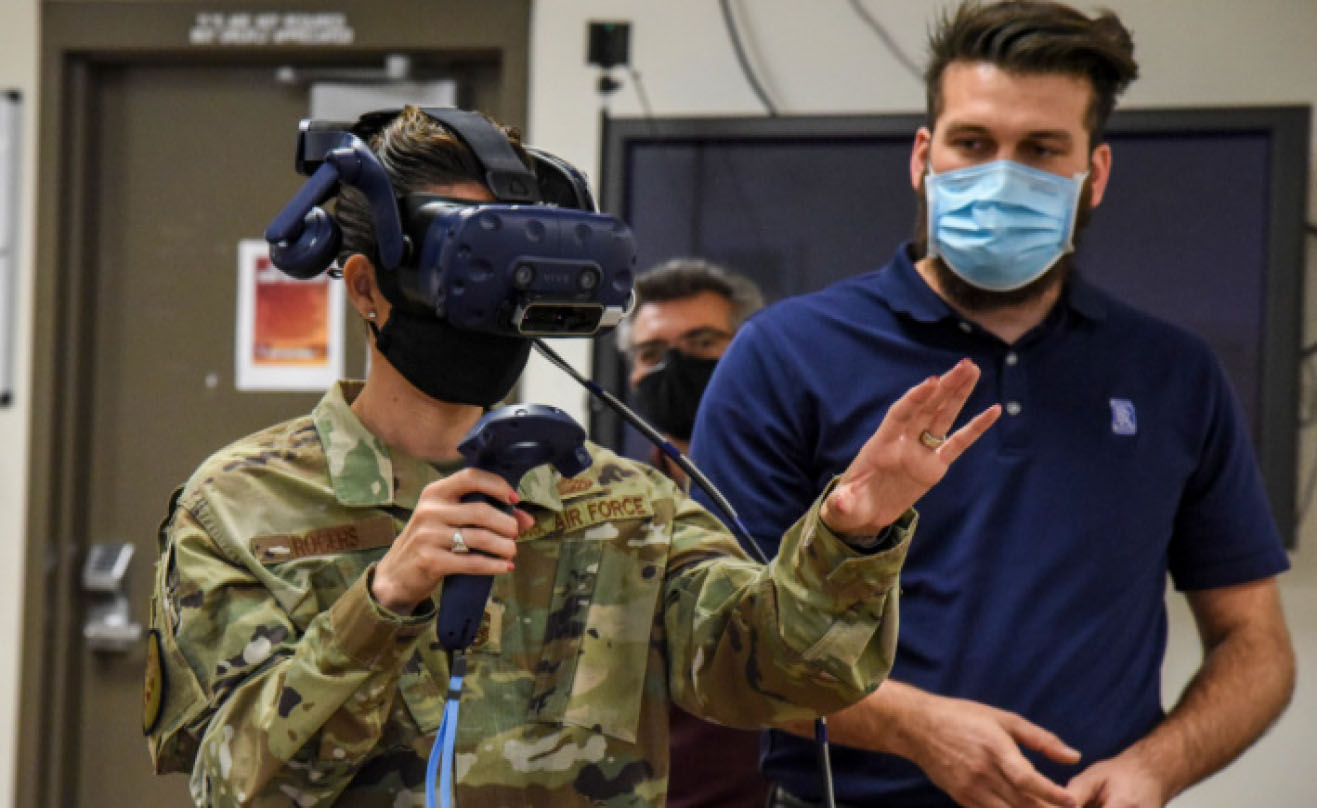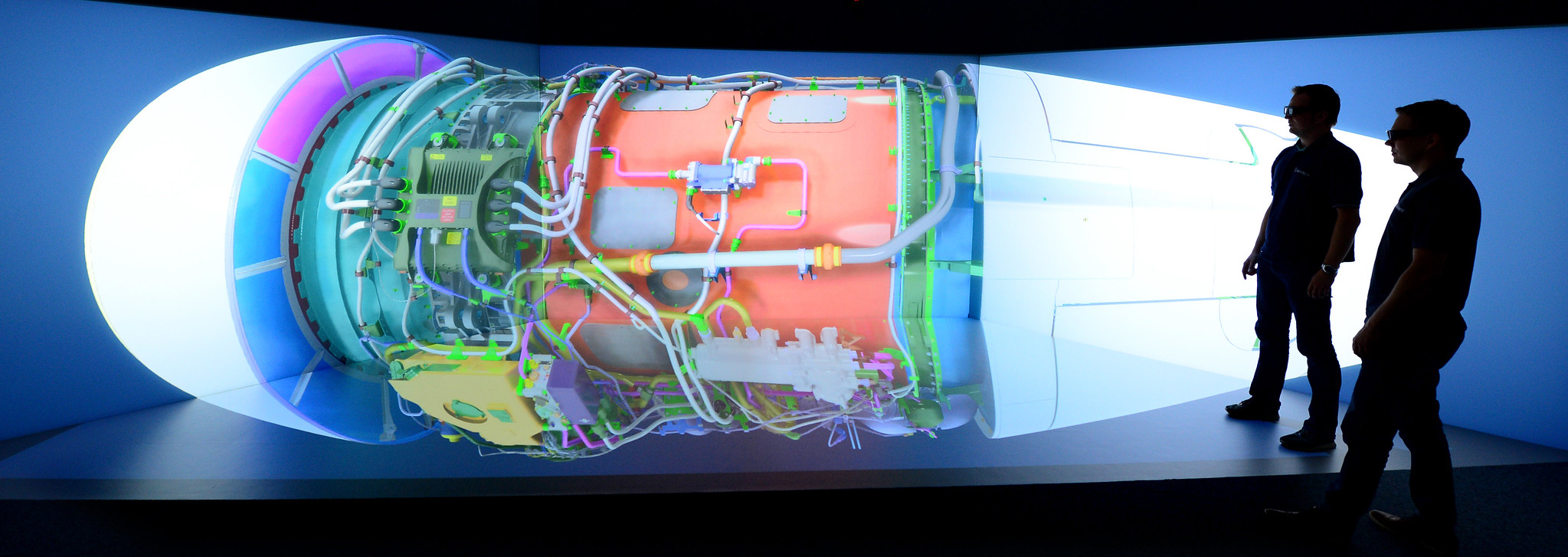
In this Viewpoint from Rolls-Royce North America Defense, Darryl Roberson, Senior Vice President and retired U.S. Air Force Lieutenant General, discusses how the company is developing advanced technology to support the Air Force.
Breaking Defense: Flying the latest and greatest aircraft has always been important to the Air Force, but there has been an increasingly high interest in a broader level of innovation within the service in recent years.
Darryl Roberson: There is no doubt the U.S. Air Force has always wanted to have the most advanced and capable aircraft to defend the nation. I’ve been very fortunate to fly a few of those incredible birds. But the key to increased lethality and advantage over our adversaries is the introduction of new technology and capabilities from industry. It’s no longer just about better aircraft, it is more about integrating capabilities across the board, especially electronic warfare and cross-domain integration. That’s our goal at Rolls-Royce, which has been proud to support Air Force missions by delivering tens of thousands of engines for more than 100 years. We Pioneer the Power that Matters. We are constantly innovating – whether it is to deliver hypersonic solutions, digital designs, rapid prototyping, improved fuel efficiency or enhanced survivability through our infrared suppression systems. Rolls-Royce Defense, specifically, is relentlessly focused on providing the Power to Protect.
Our LibertyWorks advanced technology unit in Indianapolis – our Skunk Works or Phantom Works equivalent – is constantly pushing the envelope on everything from small attritable engines to reusable hypersonics, from digital design and engineering to advanced manufacturing methods, from Virtual Reality maintenance training systems to an industry leading power and thermal management system for directed energy weapons that we call ColdFire™. We spend a lot of time listening to what the Air Force needs, and then we dive in and begin innovating so we can be at the leading edge.
BD: Hypersonics has certainly been a keen interest for the Air Force. What can you tell us about what Rolls-Royce is working on to solve this propulsion challenge?
Roberson: Rolls-Royce is heavily engaged in developing, and here is a key word, ‘reusable,’ hypersonic capability for the Air Force. A lot of the technology is confidential, but this part of hypersonics can help in areas such as ISR and rapid troop movement. When you start breaking down the propulsion needs and aircraft integration issues, there are many elements that require solutions not currently operational in other aerospace platforms. Rolls-Royce has experience in high-speed flight with the supersonic Concorde and based on our current capabilities and progress, we are bringing new and exciting technologies to the Air Force and the commercial world.
BD: You mentioned directed energy, and it may surprise people that a company known for propulsion is also working on power and thermal management for this new capability. What is the company doing in that area?
Roberson: It’s interesting because part of being able to provide turbine engine propulsion is being able to manage high-temperature components. Rolls-Royce has been developing power and thermal management technology for directed energy for over a decade now and we have invested more than $50 million to design and test the elements of the system. We call our solution ColdFire™ because we can manage the huge thermal loads associated with firing these weapons. We recently delivered an operating unit to Lockheed Martin for integration and additional field testing later this year. We believe we have an industry leading power and thermal management solution at the power levels we are providing. Our ColdFire™ system is compact and portable, can fit on a medium-size truck, inside the cargo bay of a C-130, or on the deck of a ship – and it is also scalable. Our ColdFire™ system offers the capability for what we call an ‘endless magazine.’ That means an operator doesn’t have to stop firing to recharge or replace batteries. We are excited about our technology and look forward to additional discussions with the Air Force for base defense as well as other needs.
BD: Infrared suppression (IRS) is another technology that might not seem like a natural fit for an engine company. How does that sit within Rolls-Royce capabilities?
Roberson: We believe infrared suppression is best done by the company that makes the engine so it is a natural fit for Rolls-Royce. The result is a more effective, reliable, and typically less costly design for the warfighter, which enhances survivability. We have incorporated many component designs already used in our gas-turbine engines such as structures, materials, and cooling features to make the technology succeed. We have developed solutions for multiple air platforms, including the AC-130W operated by Air Force Special Operations Command, the MH-47 in Army special operations, the V-22, and the C-130J. The MH-47 IRS solution created by Rolls-Royce has successfully compiled more than 300,000 engine flight hours, and the AC-130W IRS has topped 15,000 hours of engine operation. The V-22 version has completed early flight tests and the C-130J design is complete and ready to be placed into service when the Air Force or another customer is ready to go.
BD: Improvements in digital capabilities have been a major area of interest within the Air Force. What is Rolls-Royce doing with digital capabilities to meet these challenges of design and engineering, aftermarket services, VR systems, etc.?
Roberson: We’ve been an industry leader for years across many aspects of digital capabilities. We’ve demonstrated our strong digital engineering pedigree in digital design and virtual reality on the F130 engine, which is our proposed engine for the B-52, as well as numerous other engines to include digital twin capabilities. We enjoy a proven track record in the area of digital test, as well as in reducing risk by combining digital and test-cell capabilities to speed up the overall process.
The DoD is looking to industry to develop advanced technologies in order to maintain a competitive advantage. Shown is virtual 3D modeling at Rolls-Royce.
In manufacturing, Rolls-Royce is actually one of the founders and leaders in the DoD-industry Manufacturing x Digital (MxD) high-tech consortium that is acutely focused on digital manufacturing. This puts Rolls-Royce at the forefront of the latest developments in advanced manufacturing. Rolls-Royce also uses a value-driven approach to implement digital technologies. The aim is to reduce risk, cost, and delivery time. On the aftermarket services side, Rolls-Royce has introduced a new digital virtual reality maintenance training system to the Air Force for our AE 2100 engines that power the C-130J aircraft. The training system went into operation in the fall of 2020 and has been well received.
BD: Rolls-Royce has invested in the U.S. for decades, and we understand you have just completed another major investment project to revitalize your operations. Tell us about that.
Roberson: Rolls-Royce North America has been a U.S. partner for more than a century. Our headquarters is near Washington, D.C., and we have approximately 6,000 employees across the country. Our primary production facilities are in Indianapolis, Indiana, where we just completed a massive revitalization project where we’ve invested nearly $700 million in advanced manufacturing and technology. Our facilities have been completely renewed with state-of-the-art manufacturing capabilities, including new methods and equipment. We are already seeing significant improvements in efficiency and cost reduction that will benefit the Air Force and other customers.
BD: Environmental impacts from aviation continues to be of growing concern both globally and from the Department of Defense and Air Force. How is Rolls-Royce addressing these concerns?
Roberson: Rolls-Royce is absolutely committed to the environment and aims to achieve net-zero carbon use in our operations by 2030. There are two key elements of this, both are important and linked to each other. First, Rolls-Royce has been focused on improvements in fuel efficiency and reduced environmental impact for a long time. Every new generation of our commercial engines, for example, includes reductions in fuel burn to lower the environmental impact. We are also championing electrification – developing, testing, and innovating technologies and systems together with partners to create the electric propulsion and energy systems for tomorrow. Second, these advancing electric capabilities will benefit the warfighter because electric motors are inherently quieter – translating to more lethality, especially for special forces. While there are no specific requirements from the Air Force at this moment, our company will continue to pursue these capabilities for the future.
BD: In what ways is Rolls-Royce LibertyWorks helping the DoD address the National Defense Strategy? How is LibertyWorks using agile techniques to quickly provide capabilities to the warfighter?
Roberson: Rolls-Royce LibertyWorks just celebrated its 25th anniversary serving the Air Force and the rest of our Defense Department customers, including DARPA, NASA, and the major airframe companies. LibertyWorks is an advanced research technology and development unit based in Indianapolis that we like to say is ‘Innovating for Freedom’ every day. We’re certainly proud of our proven success in rapid prototyping for the Air Force. Most recently, we completed testing of a new, small, attritable engine that went from design to test in under one year. We also previously completed a rapid prototyping project for the Air Force AC-130W infrared suppressors.
We continue advancing VTOL capabilities, given our expertise in vertical lift in such aircraft as the Harrier, V-22, and F-35B, where our digital capabilities were extensively employed. All in all, we’re working closely with our DoD partners to understand their needs as we develop, produce, and sustain our technology solutions in support of the warfighter. That’s what LibertyWorks does.

No comments:
Post a Comment